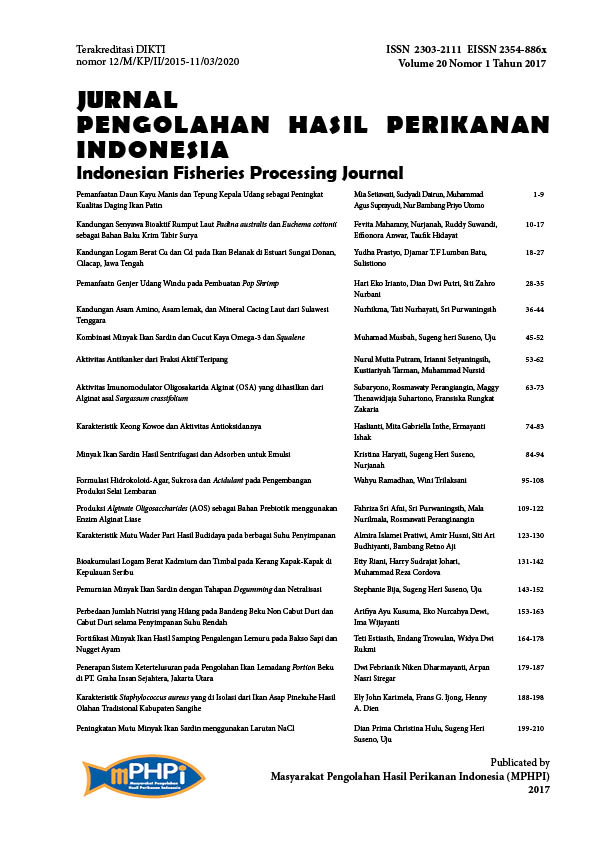Utilization of Black Tiger Shrimp Flesh Waste for Pop Shrimp Processing
Abstract
A study on the utilization of black tiger shrimp (Penaeus monodon) flesh waste in the processing of pop shrimp has been carried out. So far, shrimp flesh waste is used for the production of shrimp paste, and shrimp cracker. The objective of this study was to develop a fomula for pop shrimp production using shrimp flesh waste. Experimental design applied in this study was three-variables mixture design, in which variables observed were shrimp flesh waste, surimi and tapioca flour. Pop shrimp obtained was evaluated for sensory properties. The best product processed using a selected formula was analysed chemically and microbiologically, particularly for proxymate composition and total plate count respectively. Selected formula of pop shrimp consisted of 50.91% shrimp flesh waste, 18.18% surimi, 3.64% tapioca flour, 10.91% onion, 2.18% garlic, 0.73% pepper powder, 1.45% sugar, 0.36% monosodium glutamate, 0.73% ginger, 1.45% salt, 4.44% butter mix, 1.38% corn flour (maizena) and 3.64% bread crumb. Proxymate composition of the best pop shrimp was 70.52% moisture, 0.73% ash, 0.39% fat, and 7.44% protein, while microbiological load in terms of total plate count was 3.3x103 colonies/g.
Authors
IriantoH. E., PutriD. D., & NurbaniS. Z. (2017). Utilization of Black Tiger Shrimp Flesh Waste for Pop Shrimp Processing. Jurnal Pengolahan Hasil Perikanan Indonesia, 20(1), 28-35. https://doi.org/10.17844/jphpi.v20i1.16395
Authors who publish with this journal agree to the following terms:
- Authors retain copyright and grant the journal right of first publication with the work simultaneously licensed under a Creative Commons Attribution License that allows others to share the work with an acknowledgement of the work's authorship and initial publication in this journal.
- Authors are able to enter into separate, additional contractual arrangements for the non-exclusive distribution of the journal's published version of the work (e.g., post it to an institutional repository or publish it in a book), with an acknowledgement of its initial publication in this journal.





